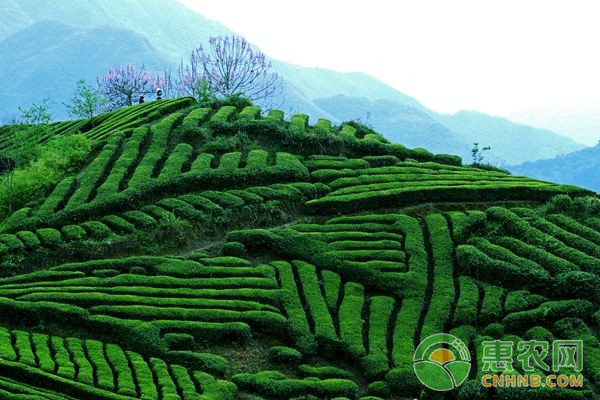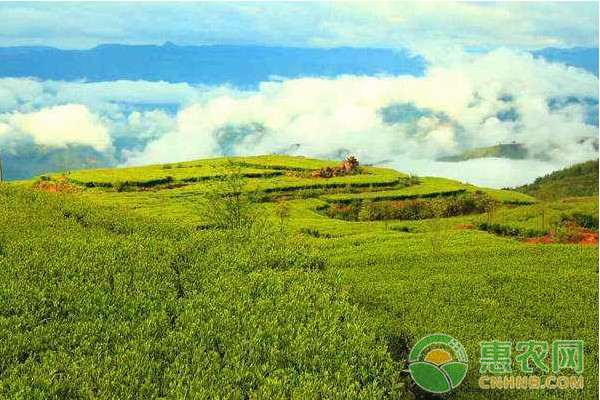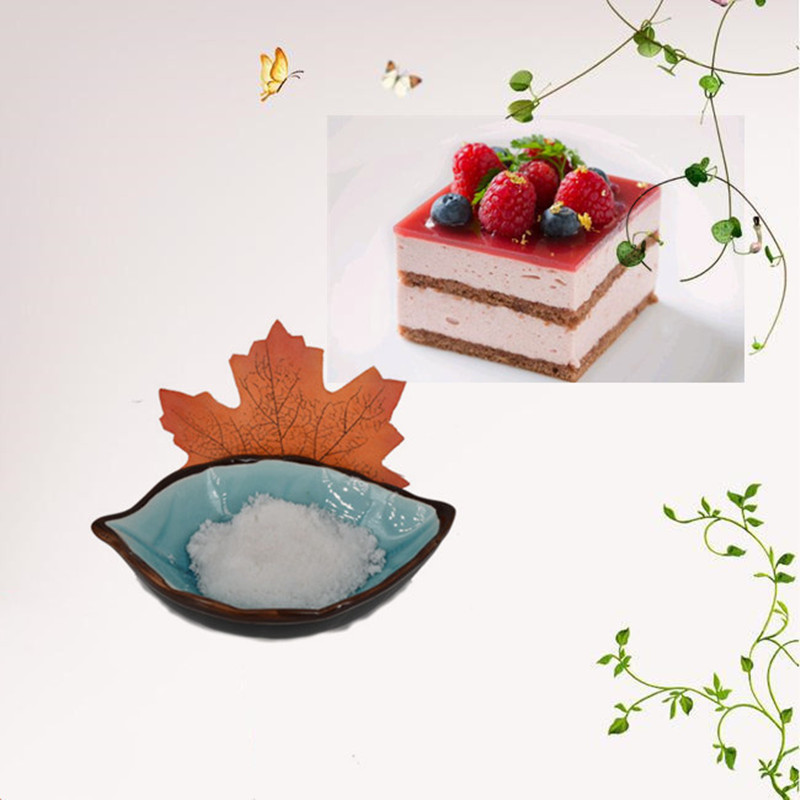In the past, the tea in the southern region has always been better than the northern region. However, when the concept of the Nanchabei was put forward, many places in Shandong began to grow tea because the three faces the sea, the climate is humid, and the soil is suitable. The acidity of growing tea.

1 tea garden fertilization
1.1 Selecting the type of fertilizer
There are many types of fertilizer in the field, but it is reasonable to choose the application of tea garden fertilizer. 1.1.1 Select fertilizer according to the growth characteristics of tea trees. Acidic, acidic or neutral fertilizers such as ammonium nitrate, urea and potassium sulfate should be used. Pay special attention to the tea tree avoiding chloride. The tea garden cannot directly use a large amount of ammonium chloride, potassium chloride and other fertilizers containing more chlorine. It must be mixed with other organic fertilizers.
1.1.2 Soil testing and fertilization according to the physical and chemical properties of the soil.
According to the application of 667m organic fertilizer 400kg, urea 25kg, compound fertilizer 25kg, scientific fertilization, followed by artificial cover fertilizer, rectification, requiring low middle and high sides, slightly steamed, easy to water. After the top dressing is finished, according to the specific needs of the tea garden, the stone tea mixture is sprayed on the tea garden tea. According to the dilution factor of the medicine, the medicine must be sprayed evenly, sprayed comprehensively, and all the large pieces are finished in one day.
1.2 Fertilization time and method
According to the growth characteristics of tea trees and the time required for fertilizer, tea tree fertilization is divided into three types: base fertilizer, base fertilizer and topdressing.
1.2.1 Base fertilizer.
The base fertilizer should be applied in the deep, medium and shallow layers, and the soil and fertilizer will melt together to promote the maturation of the underground soil, and promote the roots of the tea tree to extend underground. Ditch by 40~60cm, separate the topsoil and the underground soil, and press the layer at 10~20cm after the bottom of the ditch.
1.2.2 Base fertilizer.
The application time of the base fertilizer follows the growth rule of the tea tree. Usually, when the tea is collected, it should be fertilized in time, and should not be applied in winter. On the one hand, trenching in winter will destroy the roots of tea trees, which is not conducive to wintering of tea trees. On the other hand, the tea tree roots have poor absorption capacity and less absorption of the applied base fertilizer. The basic principle is to apply it to the roots of tea tree 3~5cm, which is convenient for root absorption and reduces the loss of base fertilizer.
1.2.3 Topdressing.
It is divided into spring, summer and autumn tea. Spring tea trees grow rapidly, absorb nutrients quickly, and require more nutrients. The top dressing before spring tea is the most important for spring high-quality tea production. The germination fertilizer should be applied according to the absorption rule of nutrients of tea trees, and should be applied about 25 days before tea picking. For tea gardens with high quality tea and high yield, due to the large amount of picking, the spring tea should be applied once before the start of picking. In order to ensure the growth of summer and autumn tea, it is necessary to carry out top dressing between spring tea and summer tea. Because of the short interval between spring and summer tea, top dressing is usually applied immediately after the end of spring tea. After the end of summer tea, a third top dressing is required to facilitate the growth of autumn tea.

2 Tea garden irrigation
Generally, in the north, sprinkler irrigation and surface irrigation should be adopted.
2.1 sprinkler irrigation
Sprinkler irrigation uniformity, uniformity of up to 4/5. The water saving effect is good, about 1/2 of the water in the ditch irrigation. It can help to complete the work of spraying liquid fertilizer and pesticide during sprinkler irrigation.
2.2 Ground irrigation
The ground flow irrigation method mainly uses water pump and other tools to introduce water into the tea garden. The method of ground irrigation is widely used in tea areas.
3 tea picking
Tea picking should be based on the strong growth of tea trees. Only the tea garden soil is fertile, the tea tree roots are developed, and the well-developed canopy can grow more sprouts and meet the requirements of picking.
3.1 Mining standards
Due to the germination of tea trees sooner or later, the growth rate varies depending on the climate, variety and cultivation management conditions, so the mining period is also different. In general, spring tea canopy shoots reach 10% to 15% of picking standards, and when summer and autumn shoots reach 5% to 10% of picking standards, bulk green tea can be mined. However, the mining standard for the tea plantation should be about 70%.
3.2 Picking method
3.2.1 Collect in time according to the standard.
The mining time is mined in accordance with the standard, and according to experience, the prosperous period is about 10 days after mining. During the prosperous period, all new shoots that can be harvested on the picking surface should be taken as much as possible, and one batch should be taken in rotation every 2~3 days.
3.2.2 Multiple batches in batches.
By batching multiple times, tea trees can be made to form more new shoots. The time interval for tea collection in batches can be flexibly controlled according to tea tree variety, climate, tree age, fertilizer management and tea processing requirements. During the period of vigorous and concentrated new shoot growth, the number of days between batches can be shortened, and the picking batch is increased.
3.2.3 According to the tree potential, the tree age leaves the leaves.
Young tea trees should be picked according to the principle of “maintenance and supplementationâ€. Adult tea trees should be based on mining, supplemented by raising, and more mining and less retention. After the tea tree is renewed, the canopy should be reshaped. Therefore, the updated tea tree should pay attention to the cultivation and the combination of cultivation and cultivation.
4 tea tree pruning
4.1 Determine the trim time according to the year
Pruning should also be carried out according to the tea tree variety, tree type, tea tree size, old tenderness, light pruning, deep pruning, heavy pruning or Taiwanese. The trimming plane requires a middle height, two sides low, a slightly hoe type, and the trim length is 10 to 20 cm. The pruning method should be selected according to the growth environment, development and tree potential of the tea tree, and scientific use can achieve the purpose of upgrading and increasing production.
4.2 Agricultural measures compatible with pruning
4.2.1 Strengthen the management of fertilizer and water.
Before the pruning, more organic fertilizer or compound fertilizer should be applied. Generally, the 667m application amount of the farm organic fertilizer is 1000~2000kg, or the special compound fertilizer for tea tree is 100kg. After pruning, when the new shoots are germinated, the germination fertilizer should be applied in time. In addition, the branches and leaves without serious pests and diseases should be left in the tea plantation.
4.2.2 Combination of retention and picking.
Dealing with the relationship between retention and picking is one of the most important management aspects of pruning tea gardens. For tea trees that are deeply pruned after spring tea, the area of ​​tea leaves after cutting is sharply reduced. One season of summer tea should be reserved, and the autumn tea should be topped lightly; the tea trees with weaker trees should be restored. Summer and autumn tea should be given Keeping up. Due to the heavy pruning and the strong bud leaves of the tea tree in the Taiwanese stalk, the main stage is to retain the seedlings in the early stage and to perform the shaping and pruning.
4.2.3 Control pests and diseases in a timely manner.
Pest control should be carried out in time after tea tree pruning. The main measures are to remove the branches with serious pests and diseases, which are easy to spread and spread, and to treat them centrally. For tea trees with heavy pruning or Taiwanese stalks, it is best to use a Bordeaux mixture or a fungicide to smear the wounds to prevent wound infection.
5 winter management
5.1 loose soil
After the tea is collected, make full use of the sensation, no watering and timely watering, and use the tractor to turn the plough in time to loosen the soil, requiring looseness and looseness, and the depth is up to 20cm.
5.2 Watering
After the winter, the snow will be poured over the winter water to make the tea tree safely winter. The tea garden has a large area and must be poured in batches. The watering must be from high to low, and the pouring should be more than 20cm infiltration and avoid water leakage.
5.3 Cover film
The new tea garden has wide line spacing and convenient soil borrowing. It adopts 4m membrane, saves time and labor, and uses the windless or small wind weather to cover the membrane in time. The old tea garden has difficulty in borrowing soil and uses 8m membrane.
5.4 Spring Management
After the Spring Festival, the temperature gradually rises. When the temperature in the shed continues to reach 25 °C or above, the two membranes of the bow shed need to be opened for ventilation. In case of windy weather, the two ends are covered with a wind-proof scraper.
5.5 withdrawal of film
After 1 week of ventilation, the tea trees in the shed are adapted to the climate outside, and the membranes are removed in time, dried, folded, and bundled. Each group is numbered and transported back to the designated place for storage.
The above is the introduction of the cultivation and management technology of the tea plantation in the northern region compiled by Huinong. If you are also suitable for growing tea in the north, you may wish to take a good look at this article and prepare for the management of the tea garden in the future!
Food additives refer to chemically synthesized or natural substances added to food in order to improve the quality, color, aroma and taste of food, as well as for the needs of antiseptic and processing technology. Due to the rapid development of the food industry, food additives have become an important part of the modern food industry, and have become an important driving force for technological progress and technological innovation in the food industry. In the use of food additives, in addition to ensuring that they play their due functions and roles, the most important thing is to ensure the safety and hygiene of food.
Our company provides chemical food additives, natural food additives, etc.

Food Additives,Beverage Additives,Malic Acid Powder,Natural Food Additives
XI AN RHINE BIOLOGICAL TECHNOLOGY CO.,LTD , https://www.rhinebiotech.com